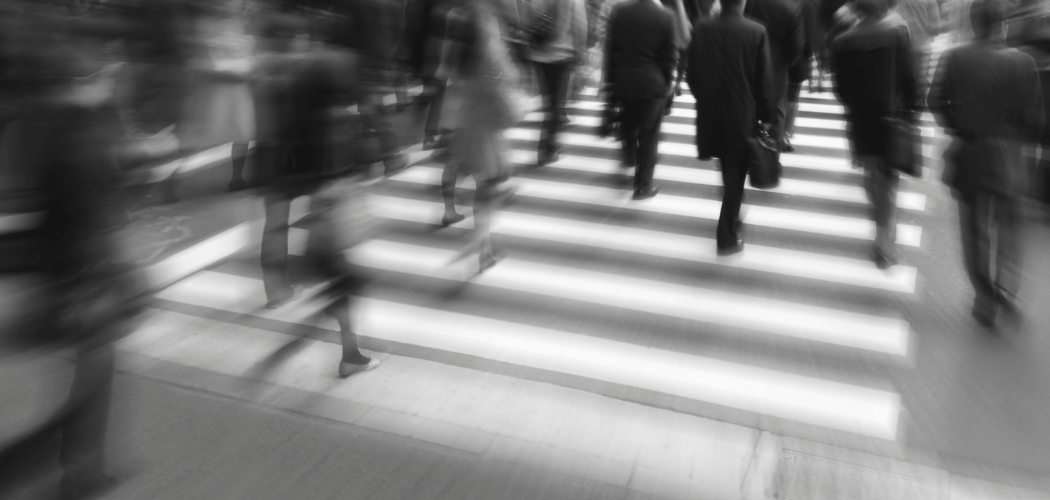What becomes of Main Street when all of its retail traffic is redirected to Dot-Com Avenue? El Centro knows.
El Centro is an example of how many retail hubs are evolving to keep pace – we mean literally, as in foot traffic – with a customer base that has grown accustomed to shopping everything online. The residential and retail complex, on Hollywood Boulevard in Los Angeles, California, has recently added Amoeba Music, the world’s largest independent record store, as an anchor tenant.
The choice is both untraditional and natural – meaning opportunistic. Amoeba has a long history in Hollywood, but it closed shop nearly a year earlier due to the Covid-19 pandemic. By courting Amoeba to open at El Centro, developer DLJ Real Estate Capital Partners brought the comfort of nostalgia and “normalcy” to a community holed up for a year.
After all, if there is one thing many of us can relate to, it’s browsing vinyl album covers in the bins.
Shopping Hubs Seek Their Shots In The Arm
In 2020, 8,741 stores closed, according to tracking by Coresight Research, and those closures are evident on Main Street as well as in the suburban malls.
Now these shopping districts, like traditional malls, are seeking tenants sexy enough to get shoppers away from their digital devices and the retail technologies introduced in 2020 to retain sales. To attract more foot traffic, these hubs are bringing in tenants that literally stop people in their tracks by combining retail with new forms of entertainment, professional spaces and civic centers.
Amoeba at El Centro is one such example. Looking across the country, here are others.
Fashion District, Philadelphia. Opened in 2019, this three-block urban retail hub made a point of including tenants that transform transient commuters into an all-day shopping base. There is flexible workspace (by Industrious), a bowling and billiards hall and an AMC multiplex. It also includes $1 million in commissioned art exhibits, designed in partnership with the Philadelphia Redevelopment Authority’s Percent for Art Program.
The Former South Works Site, Chicago. This talked-about project at the former U.S. Steel site is still in the weedy development stages, yet it brings innovative thinking simply in its vison. A pre-pandemic proposal by rapper Common, who wants to partner with developers on the project, suggests a residential community with a film production studio (including sound stages), a performance theater, skate part, golf facility, social club and a climbing wall. The site has been included in a short list of locations for Chicago’s first casino, as well.
Hudson Yards, Manhattan. This mixed-use tower is not a traditional curbside shopping district, but the mixed-use center – shoehorned into Manhattan’s West Side – is indeed serving a community. To get its condominium and apartment residents into the corridors of the mall, Hudson Yards has mixed in experiences, such as b8ta, a store where shoppers can try out and buy some of the most intriguing new tech products, and a Genesis luxury vehicle studio – a standout option in a city where many rely on mass transit.
Ivy Station, Culver City, California. Adjacent to Culver City’s Metro Expo line, this mixed-use project opened its apartment building in April, kicking off a “staggered reveal.” Housing will be joined by an untraditional anchor: WarnerMedia, which is leasing the space for employees of HBO, Cinemax and WarnerMedia Entertainment. The retail tenants will appeal to these intentionally nearby employees, residents and metro riders: There’s a yoga studio and Stretch Lab, a brewery, a Healthy Spot pet store and an outdoor area that will feature movie nights, art shows and concerts.
Over-the-Rhine, Cincinnati. A revitalized neighborhood that has gained national attention for its mix of breweries, localized retail and entertainment (including a casino and an ax-throwing hall), Over-the-Rhine still managed to add the unexpected with a disco. E19 Lounge Bar & Discothèque opened in fall 2020 and is an inclusive environment, serving the LBGTQ+ community and allies, for dance parties with live music as well as DJs and dance videos.
Highland Park Village, Dallas. This high-end, open-air center in April added the state’s first LoveShackFancy boutique, a New York-based lifestyle brand known for bridesmaid dresses designed by the retailer’s creative director, Rebecca Hessel Cohen. The center also hosts a regular community market event called Local, which includes neighborhood vendors, games and music.
Westfield World Trade Center, Manhattan. Heavy on services (it is part of the same structure that houses the World Trade Center Transportation Hub), this 5-year-old center is adding online-only merchant Elysium Health’s first brick store. Elysium develops health and wellness products based on advancements in research by its own scientists and engineers (and a Scientific Advisory Board with eight Nobel Prize winners).
Looking Ahead – Success Takes Seeing What Shoppers See
We’re still in the early stages of post-pandemic retail recovery, and some of these concepts may not hold up. What matters now, then, is how shoppers act as their worlds open back up. The ways they spend their time and money now provides valuable hints into how their preferences and tolerances will develop after the crisis.
Of course, shoppers change, and some tenant ideas may be ahead of their time. But if a 31-year-old record store can come back, retailers may not have to look so far ahead of their time. They just need to look as far as their customers can see.
Bryan Pearson is a Featured Contributor to The Wise Marketer and currently serves as a director and strategic advisor to a number of loyalty-related organizations. He is the former CEO of LoyaltyOne.
This article originally appeared in Forbes. Be sure to follow Bryan on Twitter for more on retail, loyalty, and the customer experience.




